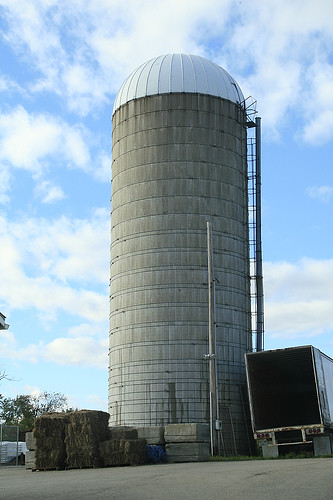 The most popular post on this blog (by a long way) is one entitled "Silo thinking and why it is bad...". It was written back in January of 2010 and appears to consistently get the highest number of views of any post I have written.
Obviously I'm looking at it thinking "Why is that?'
The most popular post on this blog (by a long way) is one entitled "Silo thinking and why it is bad...". It was written back in January of 2010 and appears to consistently get the highest number of views of any post I have written.
Obviously I'm looking at it thinking "Why is that?'Sure, it's a well reasoned, thoroughly researched treatise on the nature of the silo mentality in organisations, along with accurate and incisive commentary on how to get around it. (At least in my own mind it is...) but there's obviously something more than that.
So what?
I think it's because it hit a nerve with a large number of the readers of this blog (over 4,500 last month - thank you!), and it is apparently something that everyone can identify with.
The first paragraph read:
"When everyone in an organisation is organised and works around the concept of individual functions or departments. This encourages introversion and also decreases efficiency"I believe this to be as true now as the day it was written. The beauty is that it isn't just a process thing but a company wide thing.
The main thrust of that post relates to how a process is usually optimised to run as well as it can within a single department (or silo) and as such is not optimised to run as well across other departments or silos. I'm sure you've heard the tale of the manufacturing process which created some sort of metal engineering device. At the first department responsible for the manufacturing they put together the main three components of the device - the hub, the sprocket and the flange. They then boxed these up and sent them across to the next step where the electronics were added. The first thing this department did was remove the flange that had been added in the previous step. Then they fitted their electronic wiring & circuits and refitted the flange.
This sounds like an apocryphal tale, but it does illustrate quite graphically the ability of two departments working in the same company and producing the same product to - effectively - be working against each other. The first department had an optimised sub-process that meant it was efficient enough to be able to manufacture and construct the three main parts of the assembly, and - without reference to any further parts of the process - they were able to make themselves as efficient as possible. Across the whole of the process, though, this silo mentality was having an adverse effect.
I was reminded of this recently when working on a guest post for Squawkpoint.com which covered the topic of 'Who owns your processes'. In that post I mentioned that the process owner wants to be
the person who has the ability to make a change to the process that effects multiple parts of the business.It we take the example given above it means that we want to be able to make the first step of the manufacturing process slightly less efficient whilst, at the same time, making the overall process more efficient. Having someone owning the individual parts of the process (silo'd) does not allow that to happen.
The other point I mentioned in the original post was that reward plays a large part in this. It has been proven in survey after survey, and experiment after experiment, that people generally tend to focus on the things that will reward them the best. If I am a department boss and I tell my workers "Your annual review and associated compensation is based on your ability to process 1000 widgets per day come hell or high water" you can bet that my employees will be focused on finding ways to process 1000 widgets per day. If it means that they have a way of doing this which is optimal for their own department but sub-optimal for the rest of the widget manufacturing process then that's not their fault.
This is how silos occur.
The solution is - obviously - to reward and recognise people based not on their own individual performance, but on the company performance as a whole. The correct statement should be "Your annual review and compensation is based on the company as a whole being able to produce 1000 quality widgets per day come hell or high-water". The approach is still the same - the employees how to find a process which works in their best interests - but the end result is different - you finish up with a process optimised for the whole process rather than one which is optimised for individual departments.
It is my opinion that - despite the interest in the original post from nearly two years ago - there still appears to be a large amount of silo thinking happening in organisations.
Am I right?
.
Reminder: 'The Perfect Process Project Second Edition' is now available. Don't miss the chance to get this valuable insight into how to make business processes work for you. Click this link and follow the instructions to get this book.
All information is Copyright (C) G Comerford
See related info below

